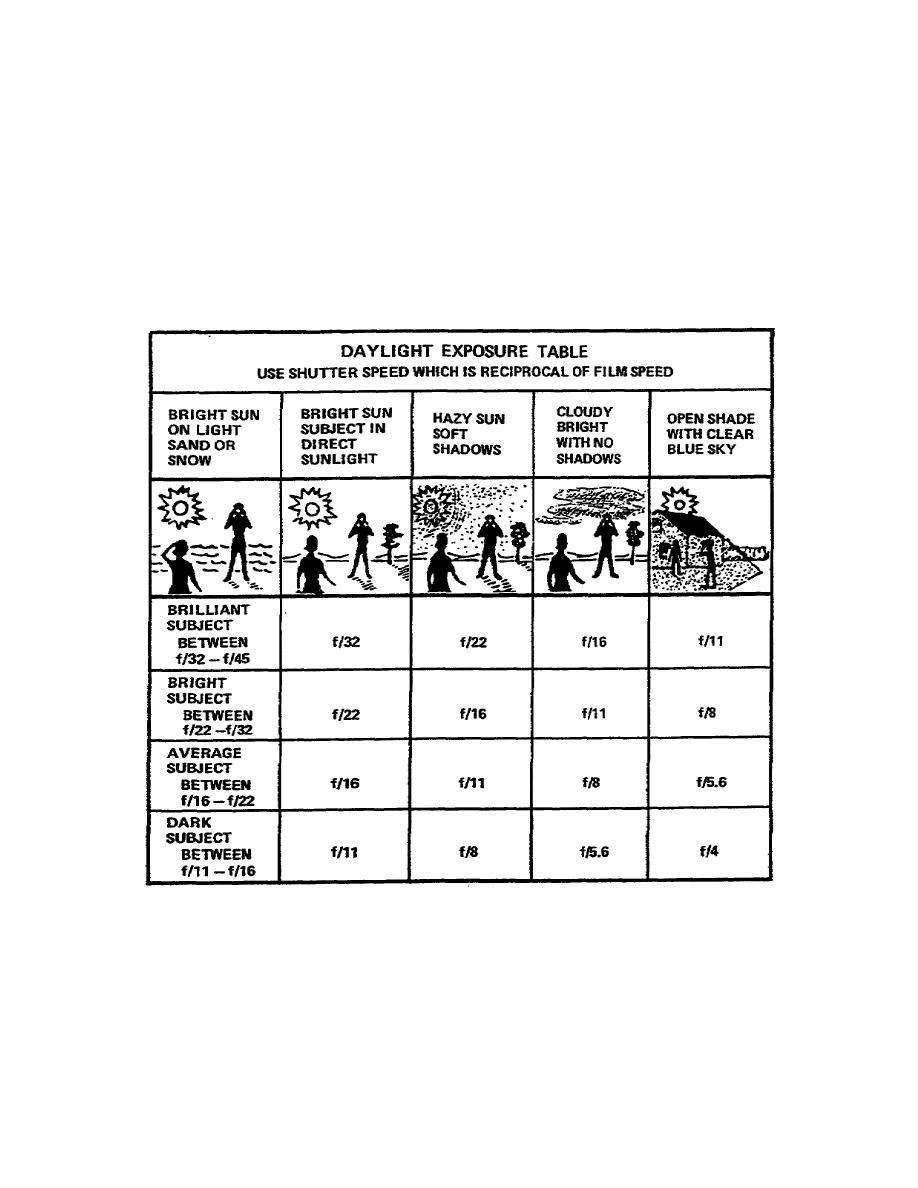
b. Dark subject. A dark subject reflects only about 9 percent of the
light striking it and absorbs the remainder.
Because it is only half as
bright as an average subject, it needs twice the exposure.
Military
tactical vehicles, weapons, people in dark-toned clothing, animals with dark
fur, and very dark or black-looking stone are all dark subjects.
c. Bright subject. A bright subject reflects about twice as much light
as an average subject. Consequently, it absorbs a much smaller percentage
of light. A bright subject requires less exposure than an average subject -
generally one stop less. Typical subjects in this category are fair-skinned
and light-haired persons, people in light clothing, animals with white fur
coats, and light-colored buildings.
Table 1-7.
Estimating exposure outdoors
d. Brilliant subject. A brilliant subject reflects about four times as
much light as an average subject and absorbs relatively little light.
A
brilliant subject requires much less exposure than an average one -
generally two lens stops less.
Snow-covered landscapes, people in white
clothing on a white sand beach, a white sailboat against a blue sky, and
white painted buildings are all brilliant.
13


 Previous Page
Previous Page
